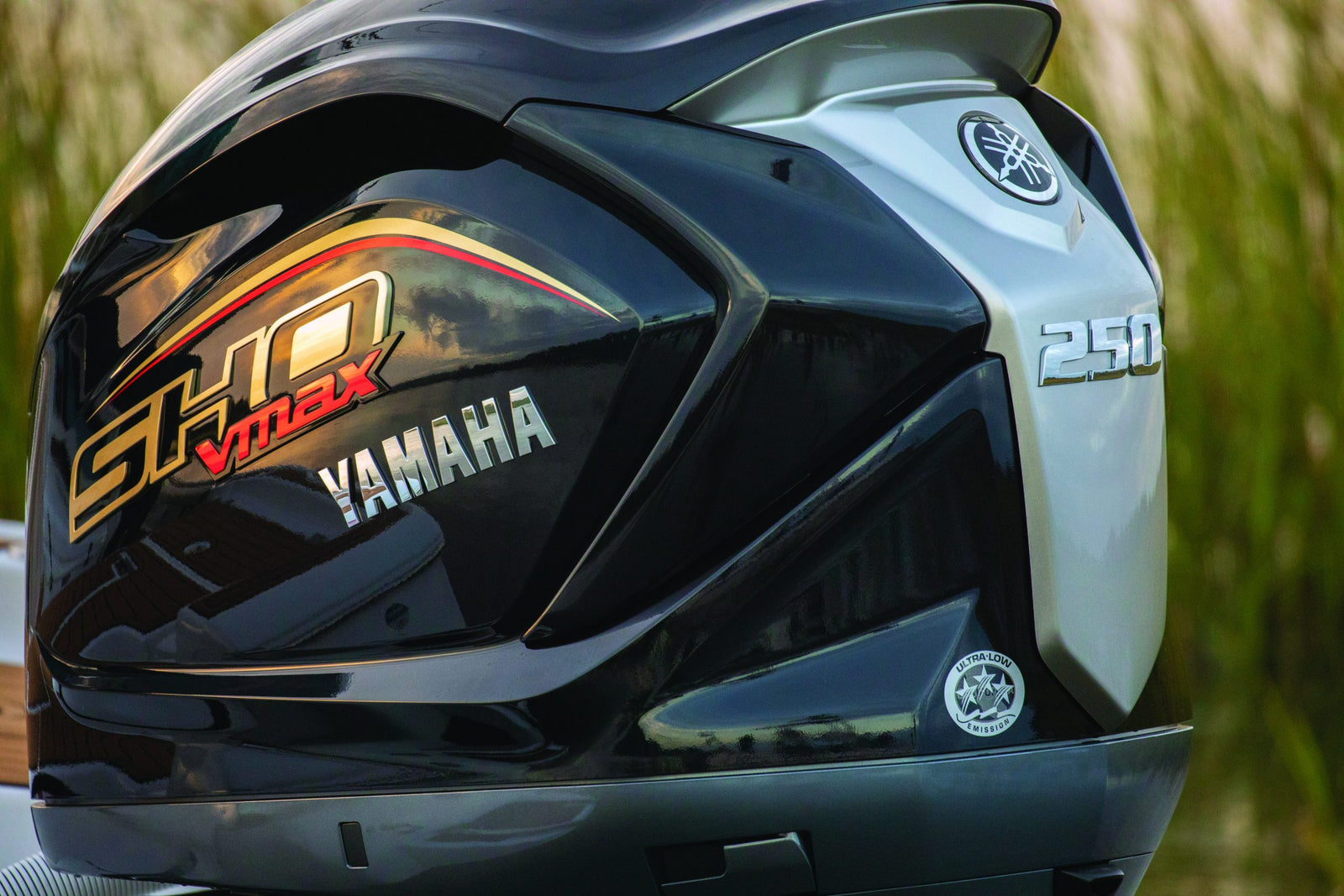Every owner wants their Yamaha outboard to last for years and run reliably each time they start it up.
With Yamaha outboards taking advantage of new technology and innovative designs, modern boaters can be out on the water longer and with fewer performance-related issues.
However, there are plenty of factors that reduce the lifespan of your Yamaha outboard motor and cause performance issues. Whether you’re boating in highly-corrosive saltwater or regularly pushing the RPMs into the red, being aware of developing issues and keeping a regular maintenance schedule is essential.
In this article, we will take a look at everything you need to know about making sure your Yamaha outboard lasts as long as possible, including:
- How Long Does a Yamaha Motor Last?
- What Impacts Yamaha Outboard Engine Longevity?
- Recommended Service Intervals for Yamaha Outboard Motors
- How Proper Maintenance Impacts Engine Performanc
How Long Does a Yamaha Motor Last?
Due to Yamaha’s design and engineering excellence, their outboards typically last for 1,500 and up to 3,500 hours before needing a major overhaul or being replaced.
That being said, the number of hours that a Yamaha outboard engine runs is dependent on the amount of usage and quality of maintenance. Since the average recreational boater logs only 50-100 hours per year, it is very common to see 20-25+-year-old Yamaha outboards performing exceptionally.
You can address small problems before they become major issues by performing regular maintenance, either as a DIY job or by taking your outboard to a certified Yamaha mechanic. Skipping this regular maintenance could shorten the lifespan of your Yamaha outboard significantly.
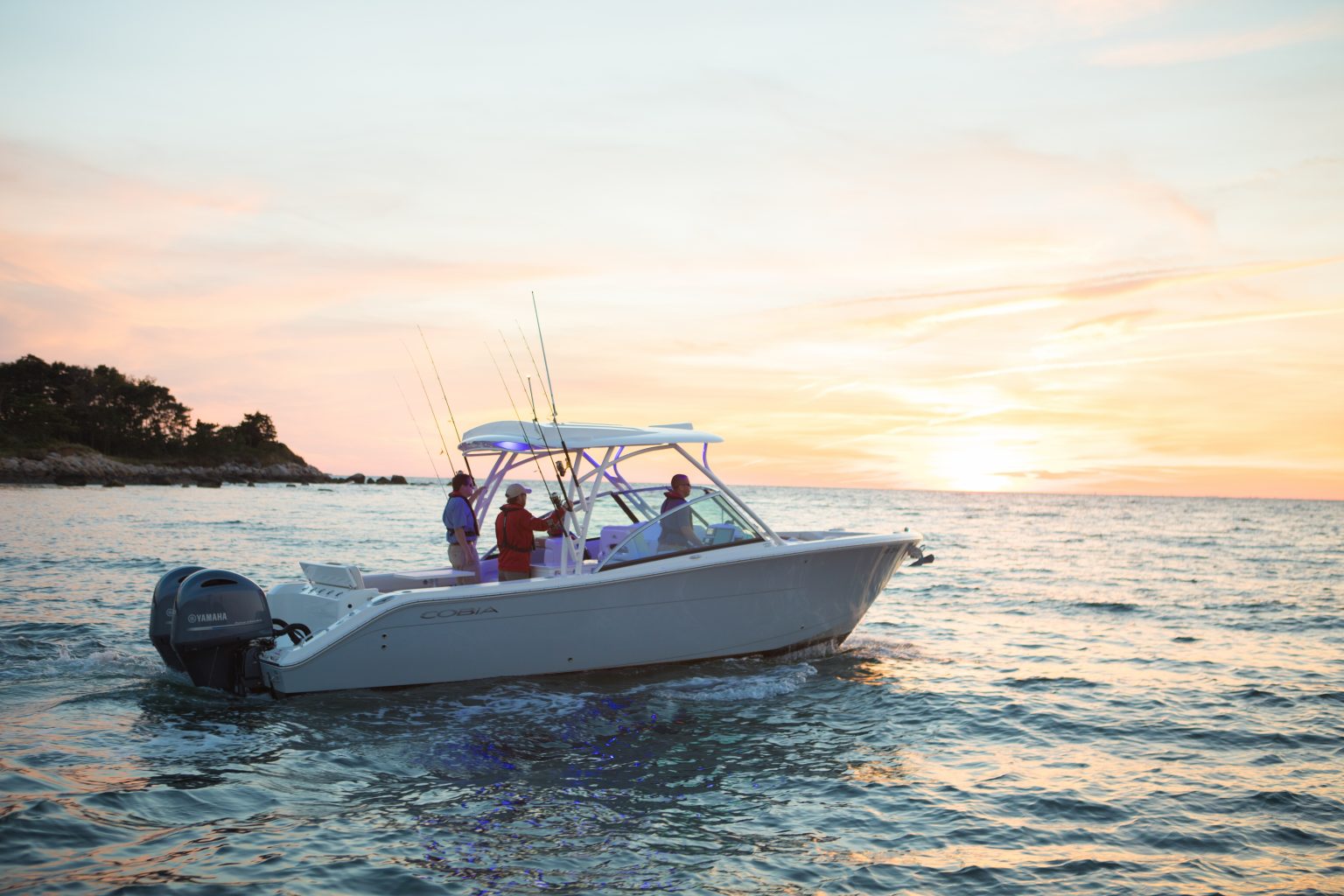
What Impacts Yamaha Outboard Engine Longevity?
The following factors affect the lifespan and overall performance of your Yamaha outboard:
- Water Type (saltwater versus freshwater)
- Frequency of Operation
- Regular Maintenance
- Using High-Quality Fuel
- Proper Winterization
- Proper Break-in Procedures
Let’s cover these briefly:
Water Type (saltwater versus freshwater)
Without a doubt, saltwater boating is more demanding and damaging to your Yamaha outboard motor. Corrosion from the water and the salty air degrades engine components, causing leaks, rot, uneven wear, and seizing of metal surfaces.
To be fair, freshwater also wreaks havoc on outboards – particularly when it intrudes in fluid systems of the engine – but this generally occurs at a slower rate.
Frequency of Operation
Yamaha outboard engines are meant to be used frequently. Leaving an outboard out of service for extended periods often leads to problems, including:
- condensation inside the engine
- corrosion of components
- shrinkage of cowling decals
- dust and other contaminants gathering on grease
While it may seem counterintuitive, engines like to run long and steady. The more often the motor goes from hot to cold, the shorter the running time between stops, and the longer the idle time between runs, the more wear you will put on your Yamaha outboard. More wear translates to a higher likelihood that your Yamaha outboard will need major repairs earlier rather than later.
Regular Maintenance
Maintenance is absolutely crucial for the longevity of your Yamaha outboard motor. Maintenance must be performed both according to daily usage as well as at regularly-occurring intervals (based on the hours of use or annually, whichever comes first).
Regularly servicing the engine addresses worn components and diminishing fluids that shave years of optimal performance from the life of the engine. Regular maintenance also helps you better understand what’s going on with your Yamaha outboard. Once spotted, you can address developing issues before they become serious and costly problems.
Refer to the following sections for Yamaha’s recommended service intervals and which aspects of maintenance you should be performing as long as you own your outboard.
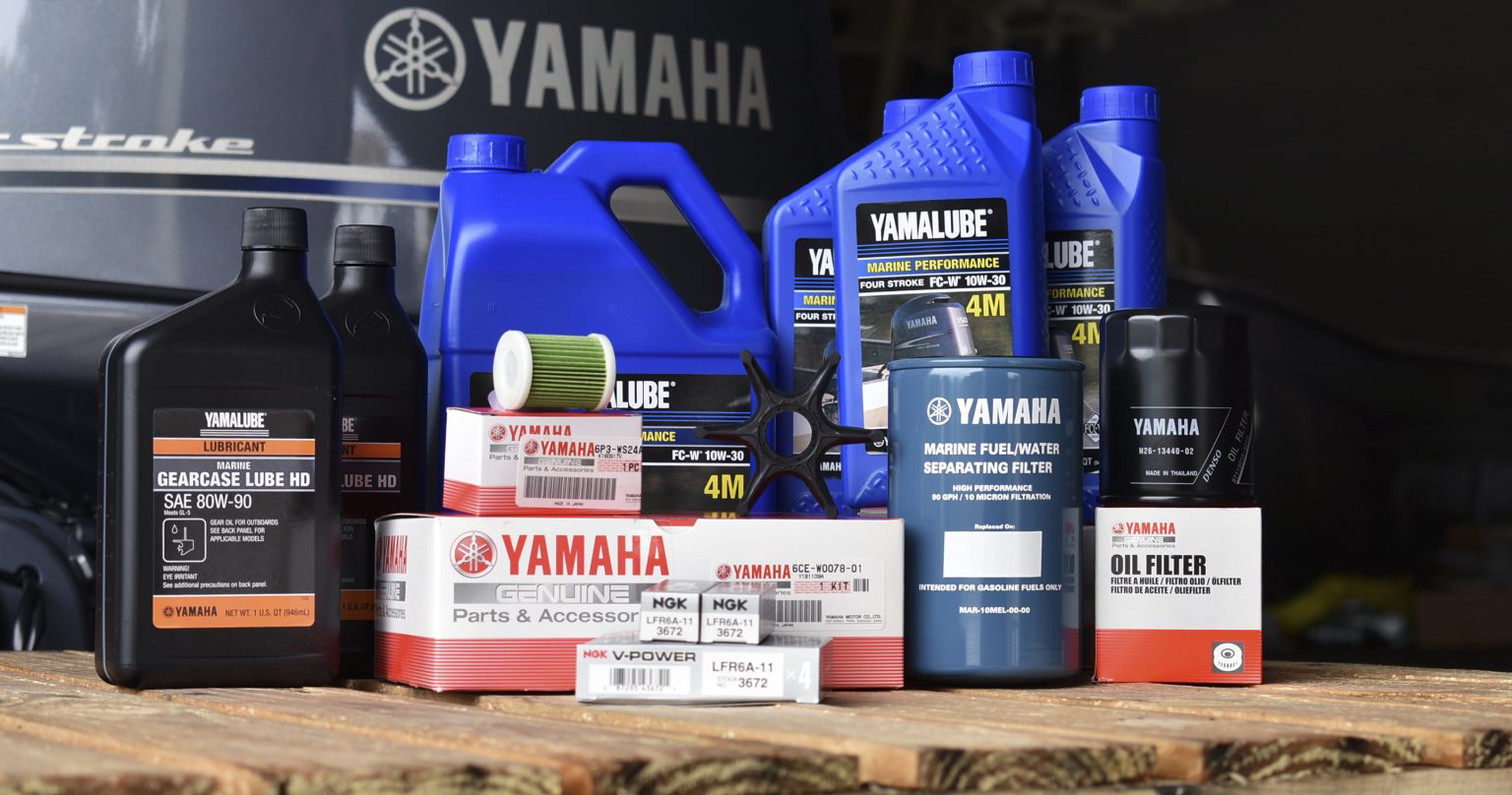
Using High-Quality Fuel
Using low-ethanol fuel is essential for the longevity of your outboard and the fuel system (e.g., fuel tanks, fuel lines, and primer bulbs). Ethanol in gasoline reduces overall mileage and causes phase separation, a process that draws moisture into the engine, reduces performance, and corrodes your engine’s internal components.
As gas tends to sit much longer in boats than in automobiles, these effects are magnified. Refer to your engine’s specifications regarding which grade of gasoline is best for your Yamaha outboard.
Proper Winterization
Winterization is the process of storing your boat during off-seasons or when your boat is not in regular use. By optimally preparing your outboard to sit unused for the winter, you ensure that any adverse effects of this storage are minimized or eliminated.
See the last section of this article for specific winterization procedures for your Yamaha outboard.
Proper Break-in Procedures
If you’ve purchased a new Yamaha outboard, breaking in the engine is essential to ensure that all components seat properly from the factory, guaranteeing optimal performance. This procedure entails the first 20 hours of operation, requiring specific RPMs and idle periods.
Failure to break in an outboard motor may lead to recurrent issues like fluid leaks and reduced performance, leading to a shorter lifespan.
Recommended Service Intervals for Yamaha Outboard Motors
Yamaha recommends the following maintenance service intervals for their 2-stroke and 4-stroke outboards:
20-Hour Service (or 3 months)
100-Hour Service (or 1 year)
300-Hour Service (or 3 years)
500-Hour Service (or 5 years)
1,000-Hour Service (After 5+ years)
1,500-Hour Service (After 5+ years)
Bear in mind that these are estimates. Maintenance can be performed before these intervals if issues start to develop or if you are placing your boat in winter storage.
How Proper Maintenance Impacts Engine Performance
The previous section touched on which factors affect your Yamaha outboard’s performance and lifespan. Now, let’s dig a little deeper into specific procedures and habits you can use that directly affect overall performance.
1. Always Treat Your Fuel
It is important to treat fuel with a fuel stabilizer as part of a regular maintenance regimen.
Every time you add fuel to your engine, prepare it for winterization or take it out of storage following winterization, you should add a fuel stabilizer to prevent water from condensing in fuel stands and separating from the fuel. Fuel stabilizer also has a secondary purpose of eliminating deposits in the fuel system, carburetor, fuel injectors, and more.
Fuel that is not properly stabilized will lead to performance issues such as rough idle, intermittent bogs, and reduced mileage.
While you may fill up frequently with fresh gasoline or use ethanol-free gas, water can still taint the fuel supply. Yamaha sells its own brand of Fuel Stabilizers and Conditioners – refer to your service manual for which brand best suits your outboard and make this a habit each time you fill up your gas tank.
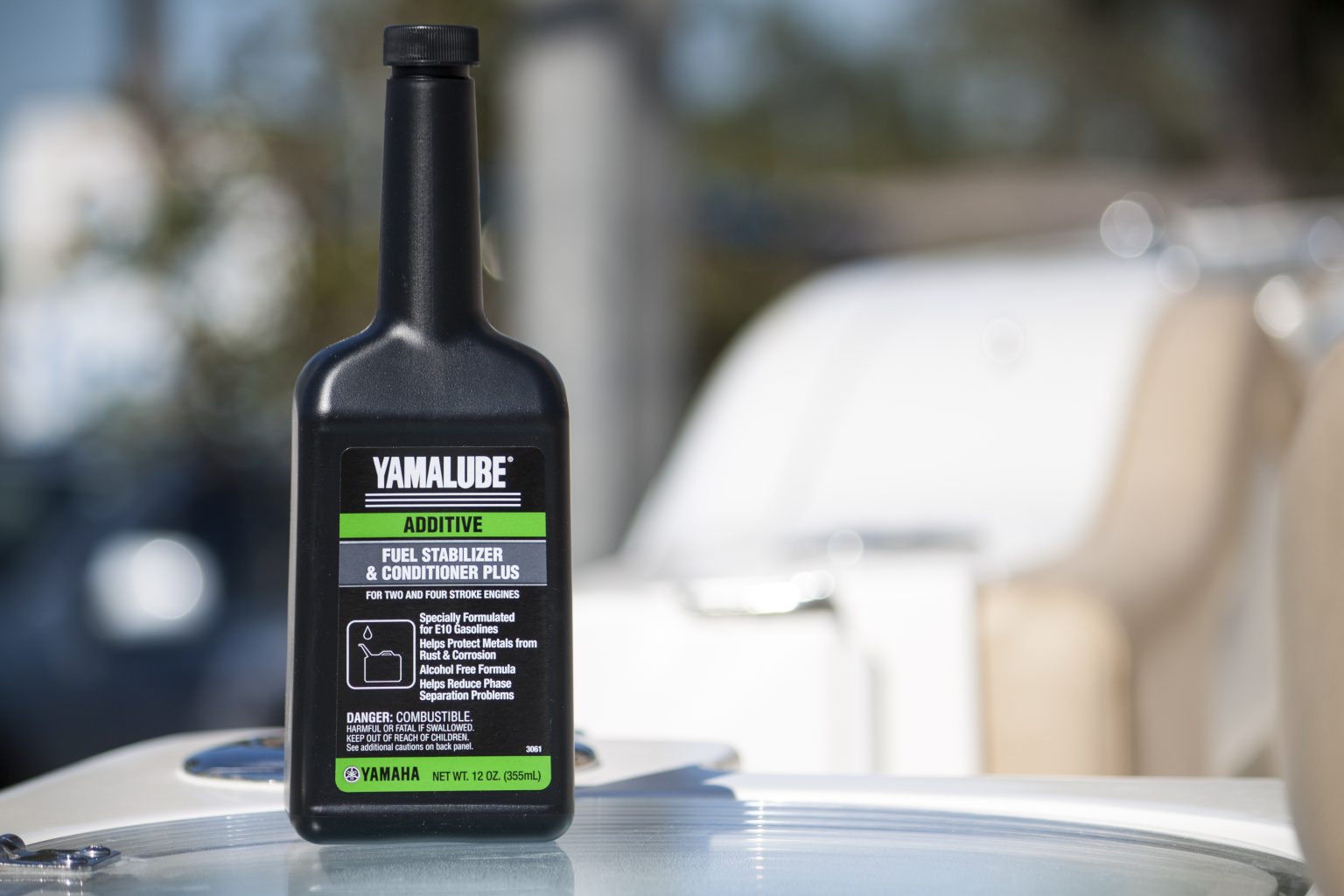
2. Flush After Each Use
Regular freshwater motor flushes are essential for the longevity of your Yamaha outboard motor.
Freshwater flushes serve several functions:
- Prevents corrosion
- Keeps the cooling passages clean and open
- Extends the longevity of the water pump impeller
Despite its importance, many boaters don’t consistently flush their motors after each use. Flushing monthly isn’t enough to prevent negative consequences to your Yamaha outboard, nor does flushing the engine with freshwater a day after use. Therefore, you must make freshwater flushing a habit immediately after each usage, particularly for saltwater boaters.
To perform a freshwater flush as part of your daily boating routine, you’ll use a freshwater source by connecting a hose to your outboard with either:
- a built-in flushing attachment
- a flush bag
- flush muffs
The process takes 10 – 15 minutes. Pay attention to any obstructions in the pilot hole, normally indicated by an uneven flow. If there is a blocked or uneven flow, your outboard is in danger of overheating and must be repaired before further usage.
Refer to your Yamaha outboard’s manual for proper flush recommendations for more information.

3. Replace Oil and Oil Filters Regularly
It’s important to check and replace oil and oil filters regularly before going out in the water.
First, check the oil before starting your engine to look for oil levels that are too high or too low:
- Too high of a level might be a clue that water has found its way into the oil sump. This can cause massive damage, either by cracking a cylinder head, breaking a piston or potentially both – simply by cranking the engine.
- Vice versa, oil levels that are too low indicate an oil leak, which often leads to an engine seizure. Look in the bilge to see if there is any oil residue. Many marine engines sit very low in the bilge, and water is constantly in contact with the oil pan. Given enough time, the oil pan will corrode and cause pinhole leaks in the pan.
In either case, you can add or drain oil to achieve oil levels in line with Yamaha’s specifications. If you detect or suspect an oil leakage or water entering your lubrication system, seek the advice of an expert Yamaha technician to service the problem immediately.
4. Engines Always Need Cooling Water
Like nearly all models of outboard motors, Yamaha outboards use cooling water to maintain a constant engine temperature. Never start an outboard engine without properly circulating water, as it can lead to damage from excessive heat to engine components. Also, the water pump impeller needs water for lubrication.
5. Keep the Prop in Good Condition
Inspecting your propeller is a vital part of Yamaha outboard maintenance. A damaged or bent propeller can cause a wide array of problems for the motor and the boat itself, including:
- Vibrating mounting nuts and bolts loose
- Abuse bearings and seals
- Cause uneven wear on mount points
- Reduce overall RPMs
- Make getting on plane difficult or hazardous
- And more
If you’ve noticed a damaged propeller, it’s time to repair it or replace the propeller with a new one. Luckily, this is a simple repair that most DIY boaters can perform, or you can take the Yamaha outboard motor to a certified repair shop to get the propeller installed professionally.
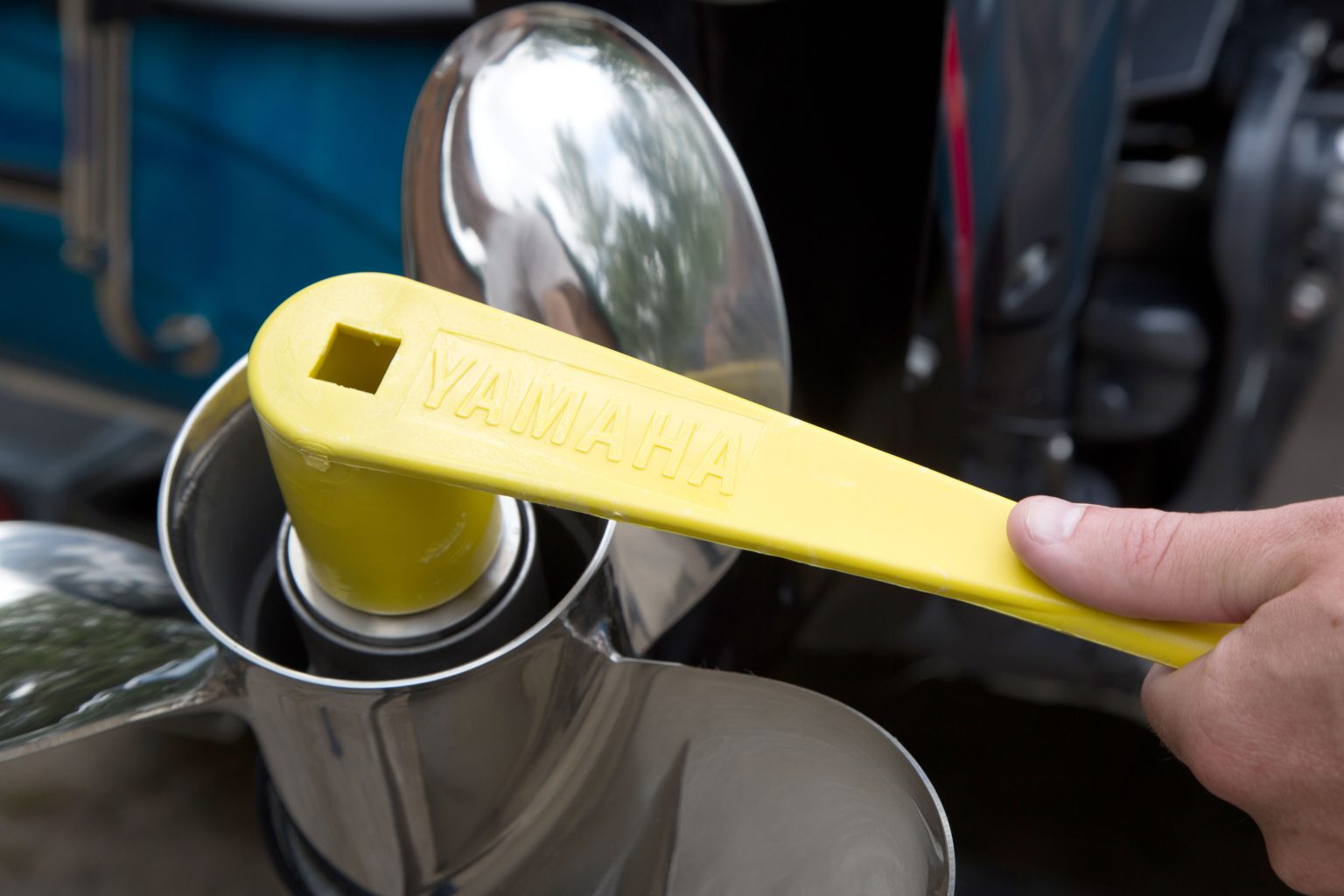
Always Perform a Proper Winterization
Winterization is a must for keeping your outboard in optimal shape against the harsh conditions and long periods of sitting in the off-season. Here’s a list of simple winterization tasks DIY boaters can perform:
- Change the oil and filter
- Stabilize the fuel
- Change the lower unit gear oil
- Fog the cylinders
- Grease the tilt tube and the pivot tube
- Use a corrosion guard to protect against corrosion


This content was designed to serve as a general guide. Persons who are not familiar with marine engine repair and have not been trained in the recommended servicing or installation procedures should have the work performed by an authorized marine mechanic. Improper installation or servicing of parts can result in engine or boat damage, personal injury to the installer, or harm to persons operating the product.
